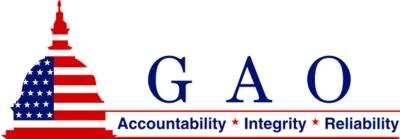Makes Three Recommendations To The Agency For Improvements
The Government Accountability Office (GAO) has concluded that the FAA's actions are not fully consistent with requirements, agency guidance, and leading practices related to the management of its research and development (R&D) portfolio.

GAO assessed FAA's actions to manage its R&D portfolio in three key areas: (1) developing its portfolio of R&D projects, (2) tracking and evaluating these projects, and (3) reporting on the portfolio. It found that FAA could be more strategic in how it develops its R&D portfolio, chiefly in identifying long-term research needs and in improving disclosure of how projects are selected. As a result, FAA management cannot be assured that the highest priority R&D is conducted.
GAO also found that while FAA tracks and evaluates its research projects consistent with leading practices, it does not fully address all statutory reporting requirements, such as identifying long-term research resources in the National Aviation Research Plan ( NARP ) or preparing the R&D Annual Review in accordance with government performance-reporting requirements. These reporting deficiencies can limit the usefulness of the reports to internal and outside stakeholders. FAA has begun to examine how it can improve the usefulness and timeliness of its R&D reports, but has not identified specific changes needed.
FAA's and the NASA's aviation R&D coordination generally reflects selected leading practices for interagency collaboration that GAO has previously identified. GAO found that FAA and NASA have: (1) written agreements that define the scope and conditions for collaboration; (2) defined the roles and responsibilities of collaboration leaders and participants; (3) defined desired outcomes and accountability mechanisms; (4) bridged their two organizational cultures through coordinating bodies and joint activities; and (5) identified and leveraged resources through agreements. FAA and NASA officials that GAO interviewed reported that they coordinated on R&D. Such coordination is exemplified by the types of technology that have been transferred from NASA to FAA. For example, NASA developed software that improves air-traffic departure efficiency. NASA Then then tested the software alongside FAA's, before transferring it to FAA for use by air traffic controllers at airports.
FAA and the private sector cooperate on R&D activities through formal and informal mechanisms. Through funding agreements FAA uses private sector expertise and technology-transfer partnerships to share facilities, equipment, and staff. These agreements and partnerships are intended to extend FAA's capabilities and resources and expand the U.S. technology base. FAA also tracks private sector R&D activities through advisory committees and more informal relationships.
the GAO found that in developing the R&D portfolio, FAA does not formally consider the impact of its R&D activities on the private sector because the FAA and the private sector have different research goals. According to three large private-sector firms GAO interviewed and to academic literature GAO reviewed, there is little evidence that FAA's activities have crowded out or precluded private firms from undertaking their own R&D.
The GAO recommended three actions on the part of the FAA:
- To help FAA better manage and oversee its portfolio of R&D activities, the Secretary of Transportation should direct the FAA to take a more strategic approach to identifying research priorities across the agency, including developing guidance to identify long-term priorities and emerging issue areas, as part of FAA's portfolio development process.
- To help FAA better manage and oversee its portfolio of R&D activities, the Secretary of Transportation should direct the FAA to clarify its portfolio development guidance to call for each Program Planning Teams to disclose the process it used for prioritizing and selecting research projects so that decision-making is more transparent for FAA management.
- To help FAA better manage and oversee its portfolio of R&D activities, the Secretary of Transportation should direct the FAA to develop guidance to ensure that future National Aviation Research Plans (NARP) and R&D Annual Reviews meet statutory requirements to the extent practicable, including (a) The NARP lists activities that are carried under cooperative agreements. (b) The NARP describes the rationale for the prioritized research programs. (c) The NARP identifies how resources were allocated for long-term and near-term research. (d) The NARP identifies REDAC recommendations that are accepted, not accepted, and the reasons for non-acceptance. (e) The NARP provides a detailed description of technology transfer to government, industry, and academia. (f) The Annual Review describes new technologies developed and the dissemination of research results to the private sector. (g) The Annual Review allows a comparison to the NARP. (h) The Annual Review is prepared and presented in accordance
with agency performance reporting requirements.
In each instance, the FAA responded that when the agency can confirm what actions it has taken in response to the recommendations, it would provide updated information.
 ANN's Daily Aero-Term (04.20.24): Light Gun
ANN's Daily Aero-Term (04.20.24): Light Gun Aero-News: Quote of the Day (04.20.24)
Aero-News: Quote of the Day (04.20.24) ANN's Daily Aero-Linx (04.21.24)
ANN's Daily Aero-Linx (04.21.24) Aero-News: Quote of the Day (04.21.24)
Aero-News: Quote of the Day (04.21.24) ANN's Daily Aero-Term (04.21.24): Aircraft Conflict
ANN's Daily Aero-Term (04.21.24): Aircraft Conflict



